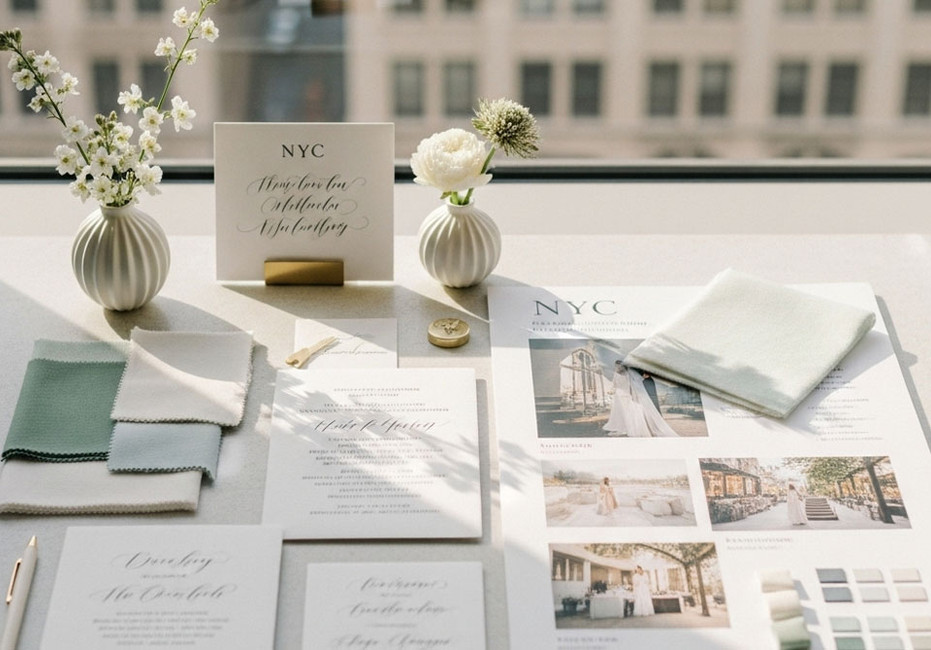What is the number one rule for a wedding?
Sep 20th 2025
Planning a wedding is one of the most exciting and sometimes stressful experiences in life. With countless decisions to make, from the guest list to the color palette, it can be easy to get overwhelmed. If you had to pick a single guiding principle, the number one rule for a wedding, it would be this: plan with your priorities in mind. When you anchor every decision to your core values and goals for the day, the entire process becomes more focused, less chaotic, and ultimately more personal.
Introduction: why one rule matters
Weddings are deeply personal celebrations, and no two weddings look the same. The pressure to meet expectations, whether your own or others', can lead to overbooking, overspending, or overcomplicating the experience. By grounding your planning in a single, clear rule, you create a compass that helps you say no to what doesn’t serve your vision and yes to what truly matters. For many couples, that rule translates into prioritizing the experiences they want to remember rather than ticking off a checklist.
In this post, we’ll explore what planning a wedding looks like when you center it around your top priority, plus practical steps to implement this rule in every phase of planning.
The number one rule: plan with your priorities in mind
The core idea is simple: identify your top priorities as a couple and let them shape every decision. This isn’t about choosing a theme or a budget limit alone; it’s about translating your priorities into tangible choices, from venue selection to hourly timelines, vendor contracts, and guest experiences.
Key questions to ask yourself:
- What moments do we want to remember most vividly?
- What are our non-negotiables for the day (music, ambiance, performance, meal style, ceremony length, etc.)?
- How can we design the day to minimize stress for us and our guests?
By answering these questions, you create a framework that guides planning conversations. For some couples, the priority might be an intimate, family-centered ceremony; for others, a lively celebration with a long reception and dancing. Your rule should reflect your unique values.
Translating the rule into a planning toolkit
Once you’ve identified your priorities, you’ll translate them into concrete planning tools. Here are practical steps to implement the rule across major planning areas:
Budgeting with intention
- Allocate resources to priorities first. If a perfect photographer or a dream venue matters more than other luxuries, you’ll direct funds accordingly.
- Build in a contingency for what matters most to you, ensuring you don’t compromise on your core experiences.
Venue and date selection
- Choose a venue that amplifies your top priorities, intimate settings for closeness, or a grand space for a memorable celebration.
- Consider timing that supports your priorities, such as a sunset ceremony for romance or a late-night reception for dancing.
Guest experience
- Plan seating, catering, and activities around the experiences you want to emphasize. If you value togetherness, opt for family-style meals or interactive stations that encourage mingling.
- Communicate clearly with guests about what to expect, reducing confusion and stress on the day.
Vendor relationships
- Meet with vendors who understand and support your priorities. A vendor who aligns with your vision will be more likely to anticipate needs and deliver on the day.
- Negotiate contracts that protect your priorities, including contingency plans and clear timelines.
Timelines and flow
- Create a schedule that prioritizes moments you care about most. If dancing or a live performance is essential, allocate time blocks accordingly.
- Build buffers into the day to prevent last-minute rushing, which can undermine the experiences you want.
Common pitfalls and how to avoid them
Even with a single rule, couples can drift into common wedding planning traps. Here are a few to watch for and how to avoid them:
- Overcommitting: It’s easy to try to do everything. Revisit your priorities regularly and trim the plan to fit what truly matters.
- Budget creep: Unexpected costs can creep in when you chase “the perfect” version of each element. Stay anchored to your priorities and reallocate funds as needed.
- Guest-oriented overreach: It’s tempting to tailor every detail to everyone, but this can dilute your vision. Remember your core priorities and design for your experience.
Real-life examples
Many couples have shared how focusing on a primary rule transformed their wedding planning experience. For instance, a couple who valued meaningful interactions chose a micro-wedding with seated dinner and a small guest list, creating an intimate atmosphere that felt authentic. Another pair prioritized music and entertainment, booking a renowned band and allocating more time for dance and live performances, which became the highlight of their day.
Final thoughts
The number one rule for planning a wedding, plan with your priorities in mind, offers a simple, powerful framework that can streamline decisions, reduce stress, and produce a day that genuinely reflects who you are as a couple. By identifying what matters most and translating that into concrete actions across budgeting, venue, guest experience, and vendor partnerships, you can create a wedding that feels effortless, joyful, and truly unforgettable.
If you’re just starting to plan, take a quiet moment to write down your top three priorities as a couple. Let those priorities guide every discussion, every invitation, and every contract. The rest will fall into place, and you’ll have a wedding day that is as you imagined, only better, because it remains authentically you.




